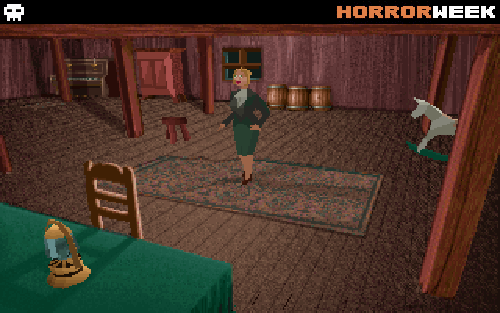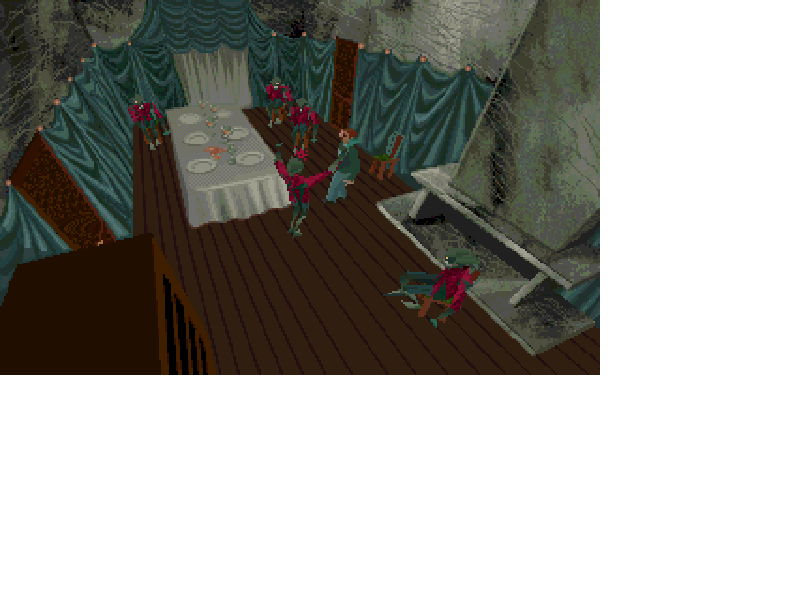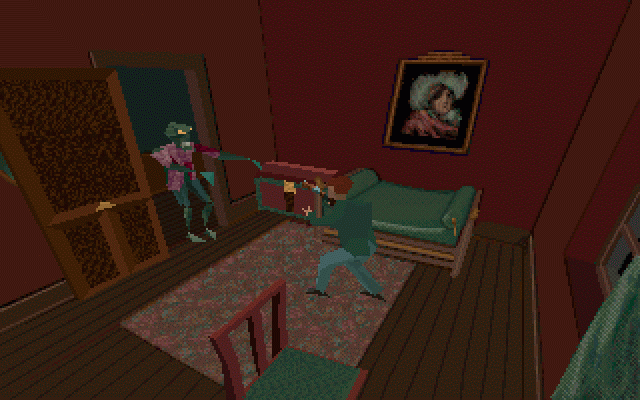This post has not been edited by the GamesBeat staff. Opinions by GamesBeat community writers do not necessarily reflect those of the staff.

It is absolutely necessary, for the peace and safety of mankind, that some of earth’s dark, dead corners and unplumbed depths be let alone; lest sleeping abnormalities wake to resurgent life, and blasphemously surviving nightmares squirm and splash out of their black lairs to newer and wider conquests.
— H.P. Lovecraft, At the Mountains of Madness
I don't even remember how we obtained the game. My older brother would often come home from school with disks smuggled in his backpack, borrowed from one friend or another, and I would usually watch as he navigated his way through King's Quest 5, Gabriel Knight, Day of the Tentacle, and other PC classics.
One night he procured the floppy diskettes for Infogrames' 1992 DOS title Alone in the Dark, and I decided to take a shot at playing. I thought I knew what I was in for. I didn't.
So when, after 30 seconds of aimlessly wandering around the attic of the mansion called Derceto, I was suddenly assailed by a jagged, abstract, vaguely wolf-like creature that leaped through the attic window (!) and bounded across the floor at me like some kind of demonic Tigger…yeah, I was a little rattled.
Alone in the Dark used 3D rendered character models on 2D backgrounds, much as later games like Final Fantasy 7 would do. Except in 1992, the polygonal models were even less distinct than Cloud's blocky arms and nose-less face. These days, I can look at these graphics and laugh at how bad they are. Back then, their lack of definition terrified me even more.
I mean, what was that thing that attacked me in the attic? Was it a werewolf? A giant, springy rat? The vile offspring of a bear and a crocodile? I didn't know, and I didn't want to know. And then there were the zombies with impossibly long, thin, flipper-like arms. And the strange, transparent ghosts who would suddenly transform into malevolent clouds of multicolored bubbles when disturbed. The bizarre graphics only made me more uneasy.

Lovecraft would have approved. In the horror author's writings, characters are always going insane simply by looking at something too hideous to be real. No wonder, then, that Alone in the Dark borrowed heavily from Lovecraft's mythos in creating its atmosphere and story. Books containing Lovecraft excerpts litter the drawers and shelves of Derceto, inducing an ever-greater feeling of dread.
(In fact, two of these books will actually kill your character instantly if you read them, with no warning or protection. This utterly baffled and terrified me.)
You could die in a large number of ways. At its heart Alone in the Dark was just another graphic adventure game, with puzzles solved by inventory items gained from searching the house. Except, instead of getting stuck for hours as in most adventure games of the time, you just died. A lot. And in the cheapest ways possible — ways you couldn't possibly anticipate (like the books).
For example, as I explored the house from the top down, I finally managed to locate the front door. Screw this, I thought. I'm getting out of here. Throwing open the door, I found not the dirt path and horizon I longed to see, but a green, gelatinous, pulsating mass which sucked my character into its Sarlacc-esque maw. Yeesh.
Perhaps the thing that weirded me out most was the cut-scene that played every time you died. You'd watch as one of the house zombies dragged your lifeless body through a dark stone hallway and laid you to rest on a strangely carved altar next to a pool of water with something lurking in it. And the music that played during this scene wasn't an original composition. It was a Chopin waltz, in a major key, with pleasant-sounding synthesized instruments spilling from my Sound Blaster. The inexplicable pairing of the two made that death scene all the creepier.
[embed:http://www.youtube.com/watch?v=K56mD0MPlhY ]
You could fight the house's horrors, but the awful keyboard-only controls made combat laughable. You watched as your female character reared back for a full two seconds before giving a weak-looking kick that, if timed right, would strike the enemy with an inappropriate whip-cracking sound (but little discernable damage). After about ten of these kicks, the zombie/wolf-croco-rat thing would die…by exploding into a cloud of bubbles and a peal of thunder.
And you could find guns, too — but they were almost always used as solutions to puzzles, not meant for real combat. (I think there were about 10 shotgun shells in the whole game.) Some enemies could only be damaged with certain guns, so you had to know when to use them. Suffice it to say that combat did nothing to assuage my fears.
Fortunately, you could avoid almost all the enemies if you knew how. Push that armoire in front of the window in the attic, and the wolf thing won't be able to get in (although you'd still hear the sound of breaking glass, which froze me for minutes before I realized nothing was coming). Move that chest over the trap door and a zombie won't be able to get through. Sometimes it was as banal as closing a door. Apparently doorknobs are a zombie's secret weakness.

By the end of Alone in the Dark, I had learned the pattern of dealing with enemies and puzzles, and the game grew less scary. But I still felt an enormous sense of relief as I ran out of the catacombs beneath the house and headed for the front exit, now free of green Sarlacc beasts. As I got into the car that pulled up on the road, I sighed, exhausted. I was safe at last.
And that's when the driver of the car turned around to reveal his face — a laughing white skull.
Only the silent, sleepy, staring houses in the backwoods can tell all that has lain hidden since the early days; and they are not communicative, being loath to shake off the drowsiness which helps them forget. Sometimes one feels that it would be merciful to tear down these houses, for they must often dream.
— H.P. Lovecraft, The Picture in the House
